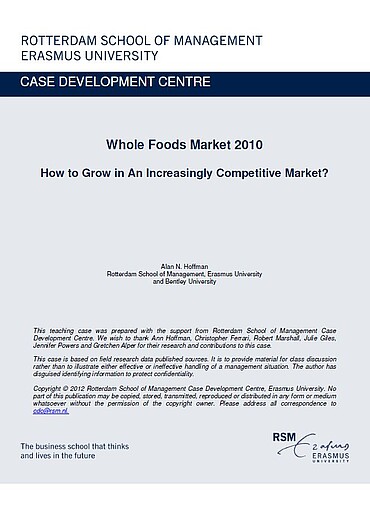Citation Note
Based on published sources; 15 pages.
Follow the 'handle' link to access the Case Study on RePub.
For EUR staff members: the Teaching Note is available on request, you can contact us at rsm.nl/cdc/contact/
For external users: follow the link to purchase the Case Study and the Teaching Note.
description
Whole Foods was a premium US leading natural and organic food chain. But an increasing demand for natural and organic foods led to low-price leaders like Wal-Mart moving into the organic foods industry. Will a different strategy help Whole Foods avoid potential price wars? If so, which one should it take?
Abstract
Whole Foods has grown from a single store to become the U.S.’s leading natural and organic food chain in the three decades since its inception in 1980. The company is not just a food retailer but represents a healthy, socially responsible lifestyle with which customers can identify. It differentiates itself from competitors by focusing on quality and innovation, which allows them to charge a premium price for their products. This strategy has formed the core of the company’s success over the last 30 years, but like any success story, there are limits to how far it can go before new direction is needed in facing competition. Since the mid-2000s, there has been an increasing demand for natural and organic foods, which has led to a growing number of players moving into the organic foods industry, including low-price leaders like Wal-Mart. This increase in competition can introduce price wars where profits are eroded for both competitors and new entrants alike. While proud of its past, Whole Foods is seriously concerned about the future direction it should take.
usage
This case is written in a way that complex strategic decisions can easily be analyzed during limited classroom discussion time. Professors have commented that the case has worked well in their classrooms.
